Formation and Movements in YSR Kadapa District
Formation and Movements in YSR Kadapa District
- Home Rule Movement in YSR Kadapa
- Impact of Sheikh Peer Shah Incident, 1857
- Formation of YSR Kadapa District Association
- Arrest of Aligarh Students in YSR Kadapa, 1921
- Impact of Mahatma Gandhi’s 1932 Fast on the People of YSR District
- Gandhi’s Visit to Kadapa (YSR District), 1921
- Quit India Movement in YSR District
Home Rule Movement in YSR Kadapa
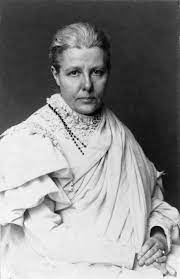 British victory in Anglo-Carnatic, Anglo-Maratha, and Anglo-Mysore Wars increased and strengthened their clench over southern part of India. Resentment against the British was increasing which resulted in several uprisings in various districts including Cuddapah (YSR District of Andhra Pradesh).
British victory in Anglo-Carnatic, Anglo-Maratha, and Anglo-Mysore Wars increased and strengthened their clench over southern part of India. Resentment against the British was increasing which resulted in several uprisings in various districts including Cuddapah (YSR District of Andhra Pradesh).
The revolt of Narasimha Reddy in 1846 and anti-British incidents and the role of Sheikh Peer Shah in 1857 led to the development of nationalist sentiments in the district. Following this Cuddapah District Association was formed in 1890. Home Rule Movement, which was started by Bal Gangadhar Tilak and Annie Besant in 1916, was well-received and supported by the common masses of the district. The people offered prayers on religious sites for the release of activists who were arrested by the government for their anti-British activities.
What remained to be in the focus of the natives was the composite culture of India built by communal harmony. People of YSR district came forward together irrespective of difference and took active participation in the home rule movement, during the colonial rule.
Impact of Sheikh Peer Shah Incident, 1857
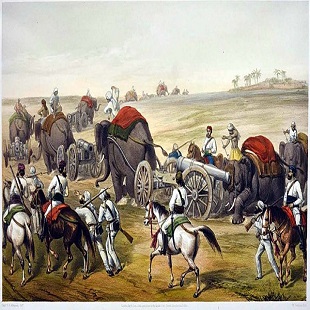 British victory in Anglo-Carnatic, Anglo-Maratha and Anglo-Mysore War, increased and strengthened their clench over the southern part of India. There was already much resentment against the British which resulted in several uprisings in many districts including the one in Cuddapah (Kadapa) in the state of Andhra Pradesh at the eve of the Great Revolt of 1857.
British victory in Anglo-Carnatic, Anglo-Maratha and Anglo-Mysore War, increased and strengthened their clench over the southern part of India. There was already much resentment against the British which resulted in several uprisings in many districts including the one in Cuddapah (Kadapa) in the state of Andhra Pradesh at the eve of the Great Revolt of 1857.
Sheikh Peer Shah was a local leader whose activity in 1857 brought a huge participation of the people in the district since he belonged to Yellampet in Siddhavattam taluk of Cuddapah district. Shah figured out that the colonialists were employing the divide and rule policy to tighten their grip over the country. He, therefore, wanted to spread the idea of communal unity in order to challenge the British. Shah established secret contacts with the sepoys of various religions of 30th Cuddapah Regiment and declared that the mutiny would result in the defeat of the British. He also reinforced the belief that the cartridges had been laced with cow and pig fat, a measure to belittle the various religions of the country and carry out mass conversions.
Such activities by Sheikh Peer led to his imprisonment for 10 years based on instructions by E. Elliot, the Commissioner of Cuddapah. Sheikh Peer’s efforts forged amicable relations amongst various people despite the wrecking policy of Divide and Rule.
Formation of YSR Kadapa District Association
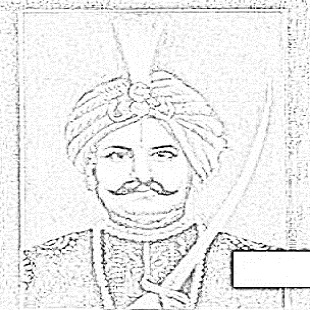 British victory in Anglo-Carnatic, Anglo-Maratha and Anglo-Mysore War increased and strengthened their clench over southern part of India. Ryotwari Settlement was introduced in 1822 to gather in maximum revenue. British also brought in several forest laws to limit the access by locals and tribals to forests and to use them for their benefits. There was already much resentment against the British which resulted in several uprisings in many districts including Cuddapah.
British victory in Anglo-Carnatic, Anglo-Maratha and Anglo-Mysore War increased and strengthened their clench over southern part of India. Ryotwari Settlement was introduced in 1822 to gather in maximum revenue. British also brought in several forest laws to limit the access by locals and tribals to forests and to use them for their benefits. There was already much resentment against the British which resulted in several uprisings in many districts including Cuddapah.
The revolt of Narasimha Reddy in 1846, anti-British incidents and role of Sheikh Peer Shah in 1857 led to the development of nationalist sentiments in the district. Such events and the formation of Madras Native Association (1852), Madras Mahajana Sabha (1884) and Indian National Congress (1885) inspired the formation of Cuddapah District Association in 1890. The leaders in association like Asad Ali Khan, Mohammad Munir Khan, Khan Bahadur Manjumiya Saheb focussed on maintaining communal unity in the district and worked towards the freedom from the colonial government.
The association ensured communal harmony between communities in the district and encouraged people to participate in various nationalist movements. The people of Cuddapah shared anger against the colonial government and the association made sure to use it in the right direction.
Arrest of Aligarh Students in YSR Kadapa, 1921
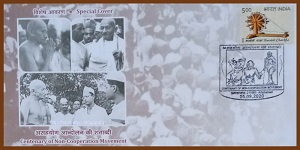 When Khilafat and Non-cooperation movement were launched by Gandhi, Cuddapah (YSR District) also joined with vigour. Khilafat Committee was formed in the district under the influence of G. Harisarvothama Rao. Many meetings were conducted by K. Ramachandra Rao and C. S. Narasimhacharyulu which were attended by masses of the district.
When Khilafat and Non-cooperation movement were launched by Gandhi, Cuddapah (YSR District) also joined with vigour. Khilafat Committee was formed in the district under the influence of G. Harisarvothama Rao. Many meetings were conducted by K. Ramachandra Rao and C. S. Narasimhacharyulu which were attended by masses of the district.
Meetings were organized and attended where speeches were given and slogans of Hail Mahatma Gandhi and Hail Mother India were raised. People took out processions while singing national songs and displaying pictures of Ali brothers, Gandhi and Tilak. Harisarvothama Rao worked on uniting people of Cuddapah with the help of two students from Aligarh. They were Muhammad Hussain and Shafique Rahman Kidwai. They came to Cuddapah and organised committees and held meetings for Congress and Khilafat. On a meeting held on 21st Oct, 1921, they extended supported to Karachi Resolution in front of six thousand people. They were, soon, arrested and imprisoned for six months in Vellore Jail.
The deeds of these students inspired Magistrate, Superintendent of Police and Principal to join hands with them in their cause.
Impact of Mahatma Gandhi’s 1932 Fast on the People of YSR District
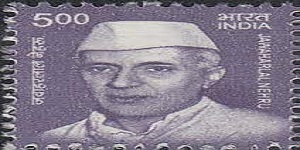 During the Civil Disobedience movement (1930-1934), the people of the present-day YSR District of Andhra Pradesh demonstrated praiseworthy unity and strong nationalism.
During the Civil Disobedience movement (1930-1934), the people of the present-day YSR District of Andhra Pradesh demonstrated praiseworthy unity and strong nationalism.
Mahatma Gandhi’s undertook a major fast in September 1932 from the Yerawada Jail in Pune against the communal award announced after the Second Round Table Conference, as he felt that this measure would spread communal enmity and disharmony. This fast helped to revitalize the Civil Disobedience movement in the YSR district. The district leaders including K Koti Reddy and M V Gangadhara Siva, campaigned throughout the district publicizing Gandhi’s stand on the communal divide. One of the major demands put forth during the movement by the people of the region was the creation of joined electorates for different religious and social communities. They also fought for the Harijan participation in the legislature. Communal unity and Harijan upliftment were two major themes stressed by the leaders in the meetings conducted throughout the district. Koti Reddy, who was a member of the Madras Legislative Council at that time, raised many issues including the communal award at the council.
The remarkable unity among the people of the YSR District at a time when the British were devising multiple ways to impose communal divide helped to further the cause of Indian freedom.
Gandhi’s Visit to Kadapa (YSR District), 1921
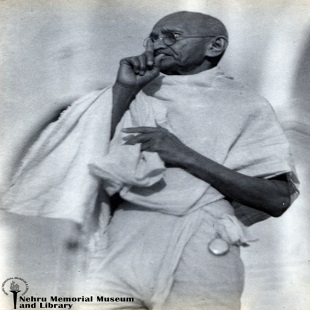 Mahatma Gandhi’s visit to Kadapa (now YSR district, Andhra Pradesh) in 1921 received a tremendous public response and inaugurated a new chapter of religious harmony in the region.
Mahatma Gandhi’s visit to Kadapa (now YSR district, Andhra Pradesh) in 1921 received a tremendous public response and inaugurated a new chapter of religious harmony in the region.
In the background of the ongoing nationwide Non-Cooperation and Khilafat movement, Mahatma Gandhi undertook a major tour of South India in September 1921 to mobilize the masses. As a part of this, he visited the former Kadapa district. People of all religions and social classes set aside their differences and welcomed Mahatma Gandhi with great warmth and enthusiasm. The visit was a grand success and saw huge public participation. Following Mahatma Gandhi’s tour, Mohammad Hussain and Shafique Rahaman Kidwai, two students from Aligarh Muslim University also visited the district to promote the Khilafat cause and received great support from the people as a result of the ground previously prepared by Mahatma Gandhi. The local leaders such as B Sayyad Saheb, Adv. S Krishna Swamy, D Ramasubha Reddy and others took an active part in Gandhiji’s tour of the Kadapa district.
As in other parts of the country, the respect and reverence people had for Mahatma Gandhi played a pivotal role in mass mobilization for the national cause.
Quit India Movement in YSR District
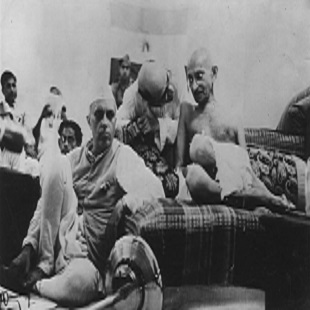 After the individual satyagraha movement, Mahatma Gandhi gave a clarion call to the people of India to begin the mass movement to oust the British from India once and for all, in 1942. The Quit India movement saw mass mobilization across the country in which people wholeheartedly participated with the mantra “do or die”, which holds a pivotal position in our path to freedom. The people of Kadapa (today’s YSR district of Andhra Pradesh) honoured the call given by Gandhi and vowed to fight for the motherland till their last breath.
After the individual satyagraha movement, Mahatma Gandhi gave a clarion call to the people of India to begin the mass movement to oust the British from India once and for all, in 1942. The Quit India movement saw mass mobilization across the country in which people wholeheartedly participated with the mantra “do or die”, which holds a pivotal position in our path to freedom. The people of Kadapa (today’s YSR district of Andhra Pradesh) honoured the call given by Gandhi and vowed to fight for the motherland till their last breath.
The Quit India movement in Kadapa saw the involvement of almost all sections of people. People of all religions and sections of society fought united to drive out the imperialist and oppressive British regime. As the movement strengthened, the authorities arrested the important leaders with the intention to suppress the protests. However, the agitations went on stronger than ever. The leadership of eminent persons such as S Rasool Saheb of Muddannur was significant during this time. The unity of the people of Kadapa was a challenge to the political authorities who had relied on the divide and rule policy to weaken the nationalist sentiment among the masses.
Source :
- Indian Culture Portal
- Azadi Ka Amrit Mahotsav
Last Modified : 8/9/2023
Provides information related to People and Persona...
